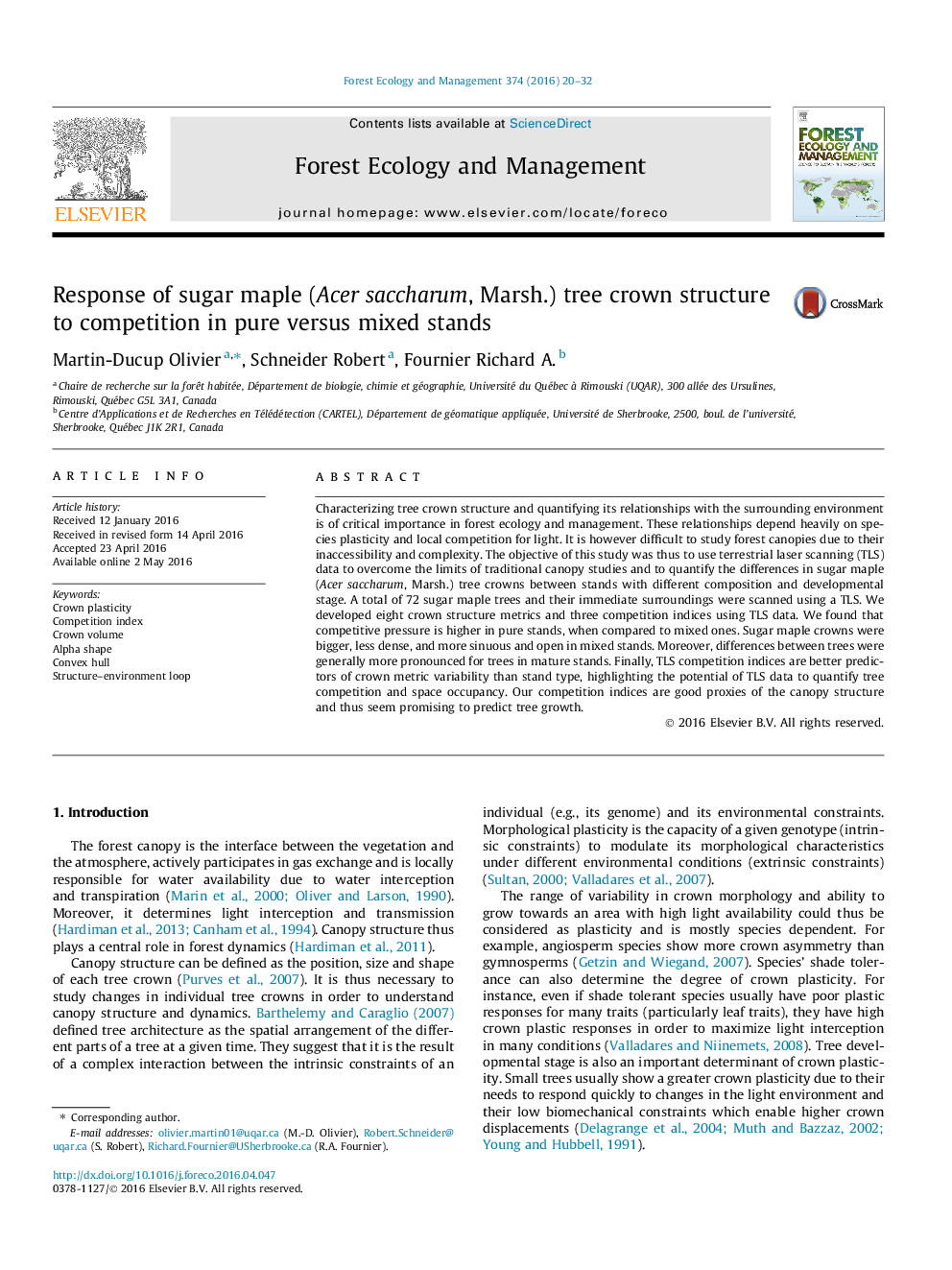| Article ID | Journal | Published Year | Pages | File Type |
|---|---|---|---|---|
| 85886 | Forest Ecology and Management | 2016 | 13 Pages |
•New competition indices (CI) and crown metrics using TLS data are proposed.•Competitive pressure for sugar maple is higher in pure than in mixed stands.•Canopy space occupation is better in mixed than in pure stands.•TLS based CI are good predictors of crown structure variability.
Characterizing tree crown structure and quantifying its relationships with the surrounding environment is of critical importance in forest ecology and management. These relationships depend heavily on species plasticity and local competition for light. It is however difficult to study forest canopies due to their inaccessibility and complexity. The objective of this study was thus to use terrestrial laser scanning (TLS) data to overcome the limits of traditional canopy studies and to quantify the differences in sugar maple (Acer saccharum, Marsh.) tree crowns between stands with different composition and developmental stage. A total of 72 sugar maple trees and their immediate surroundings were scanned using a TLS. We developed eight crown structure metrics and three competition indices using TLS data. We found that competitive pressure is higher in pure stands, when compared to mixed ones. Sugar maple crowns were bigger, less dense, and more sinuous and open in mixed stands. Moreover, differences between trees were generally more pronounced for trees in mature stands. Finally, TLS competition indices are better predictors of crown metric variability than stand type, highlighting the potential of TLS data to quantify tree competition and space occupancy. Our competition indices are good proxies of the canopy structure and thus seem promising to predict tree growth.
